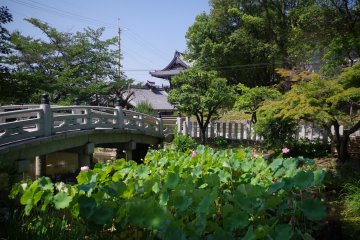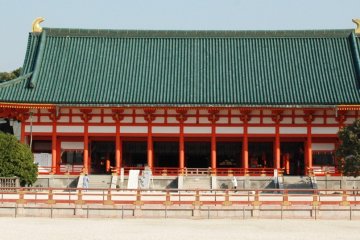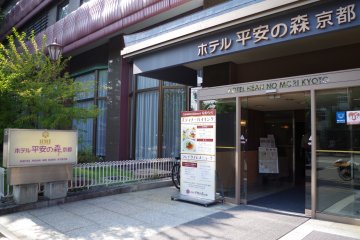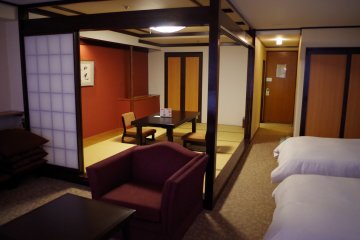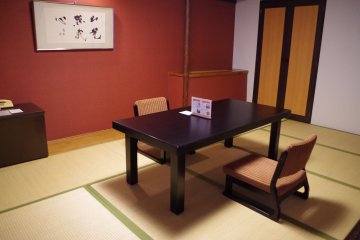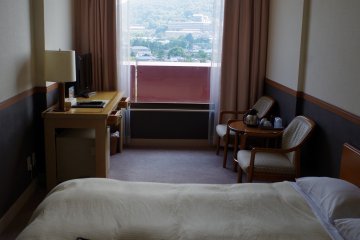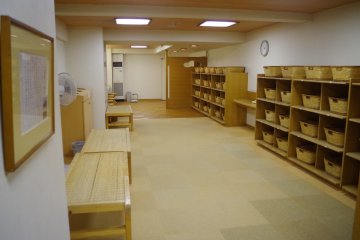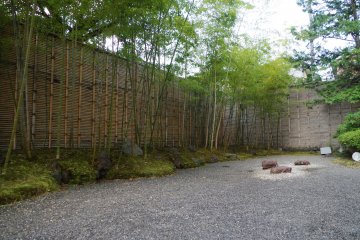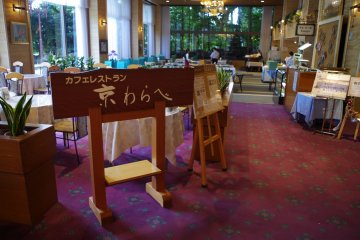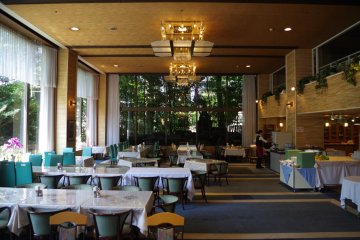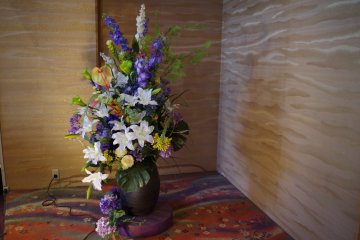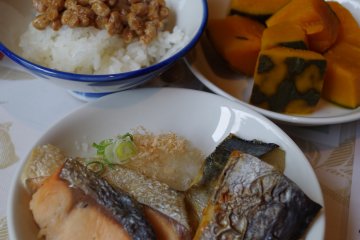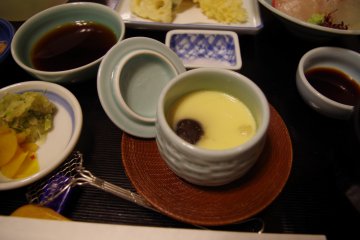Looking for a right hotel is not an easy matter. Every city possesses its own character and atmosphere. If I was a hotel architect, I would design a hotel that encapsulates the soul of the city, its ambience. In Kyoto, an ancient capital city of Japan filled with historical monuments, the place in my mind would be imbued with tranquility and beauty, so I can unwind and be at one with the ancient traditions of this timeless capital. As I sink into the lounge overlooking the Zen garden, I have found what I have always longed for, this elegant hotel being exactly what the inner architect in me had visualized.
Heian no Mori can be translated as the Forest of Peace, an apt name for this grand old lady of Okazaki. Straddling between the foothills of the Higashiyama woods and the museum mile of Kyoto, the influences of nature and culture are never far away as you sample an autumn harvest, or take in the country air on a moonlit evening. The wood grain and stone decors complement with warm geometric lighting, with its bamboo like contours reminiscent of a Japanese garden.
Life is a journey, and so as you walk from the East to West wings, you also journey with the folk of Kyoto from past to present, like retracing the voyage so many generations ago on the silk road from Japan to the Mediterranean Sea.
The East wing is fitted out with Japanese style rooms, tastefully decorated with porcelain and lacquer ware from around Japan. A little over a century ago, kutani porcelain, gorgeously decorated with floral motifs were exported to Europe from the Port of Kobe, with many of these masterpieces making their way through Kyoto on the way to Kobe.
In a traditional Japanese ryokan, tatami rooms are decorated in a minimalist style, and the Japanese style rooms here are no exception. It gives a sense of uncluttered stillness, something you slow down to. From the feel of the unadorned wood beams, to the woven reeds of rice straw in the tatami floors, there is a connectedness to nature in Japanese aesthetics. Smell the essence of the rice fields in the reeds, and feel the warmth of the summer sun in the bamboo. The translucent Shoji windows are made with washi paper, created from the milky veins of the Kozo Mulberry tree, which for many paper makers embodies the life force of the forests.
In a traditional Japanese home, only the most privileged guests stay in the rooms that are furthest from the entrance. The word Oku, meaning deep inside, is the usually the place for the most honored guests. The farther away the place is from the entrance, the greater symbolic value of the place. The grandest rooms at the end of a Japanese home often have an Engawa, or a raised platform with a view of the garden. While an armchair by the window takes the place of the Engawa here, you can still have your private place for meditation.
In the West wing, the Western style rooms are reminiscent of a film set. Just imagine being in one of the earlier James Bond movies. The pastel orange and pink floral bed covers are homely and the double bed rooms in particular are spacious by Japanese standards. The large windows and beige walls giving a feeling of light and space.
So whether your preference is for Western or Japanese accommodation, you will find what you are looking for in this hotel. But should you want to mix and match, I suggest you take the mixed style room. It is divided into Western and Japanese areas, with the convenience of two Western style beds and a Japanese living area with tatami mats. They have rooms suitable for all sizes, from a single traveller to a group of six or seven, though single rooms only come in Western style.
The feeling of space and light continues with the floor-to-ceiling windows in the restaurant. Utilizing its green surroundings, guests can immerse themselves with silhouettes of the trees nearby. Mirroring the west garden, the East wing’s Japanese restaurant Rakuraku also has windows overlooking its own Zen gardens, framed by a grove of refreshing green bamboo.
While aesthetic design is a draw card, repeat visitors stay because of the great service and facilities. The staff in particular welcome you like honoured guests, and no request was too big or small.
From the conventional to the unusual, the Japanese set dinner takes your palette on a voyage deep inside the temple of Kyoto gastronomy. I started with tempura that floated with crispiness on the outside yet tender on the inside, as well as some refreshingly tart pickled vegetables and sashimi. The standout however was the tofu hotpot, a delightful combination of tofu and Yuba soya sheets are boiled in clear soup to enhance the rich flavour of the soya. If you do not know much about Japanese cuisine, the staff in Rakuraku are more than happy to provide you with guidance.
Breakfast was an opportunity for my stomach to be reacquainted with familiar territory, with bacon, ham and sausages the mainstays on the American menu, while rice, grilled fish and natto adds authenticity to the Japanese menu.
Speaking of authenticity, enhance your ryokan like experience by taking a bath before dinner at their Onsen on the ground floor of the East Wing, and soak your weariness away to the sound of bubbling warm water. Once you are refreshed and ready to take on the night, try the karaoke bar or the roof top beer garden in summer. You can even get married here. Depending on your requirements, the hotel offers various venues for hosting wedding or meetings. The function rooms are divided into Western and Japanese styles in the basement, second and third floors. Customers can select either style of room according to the size of their functions. The function areas can contain from 15 to 300 guests.
Hotel Heian No Mori Kyoto is your window into the inner heart of Kyoto. Take in the aesthetics of Japanese beauty and hospitality.



